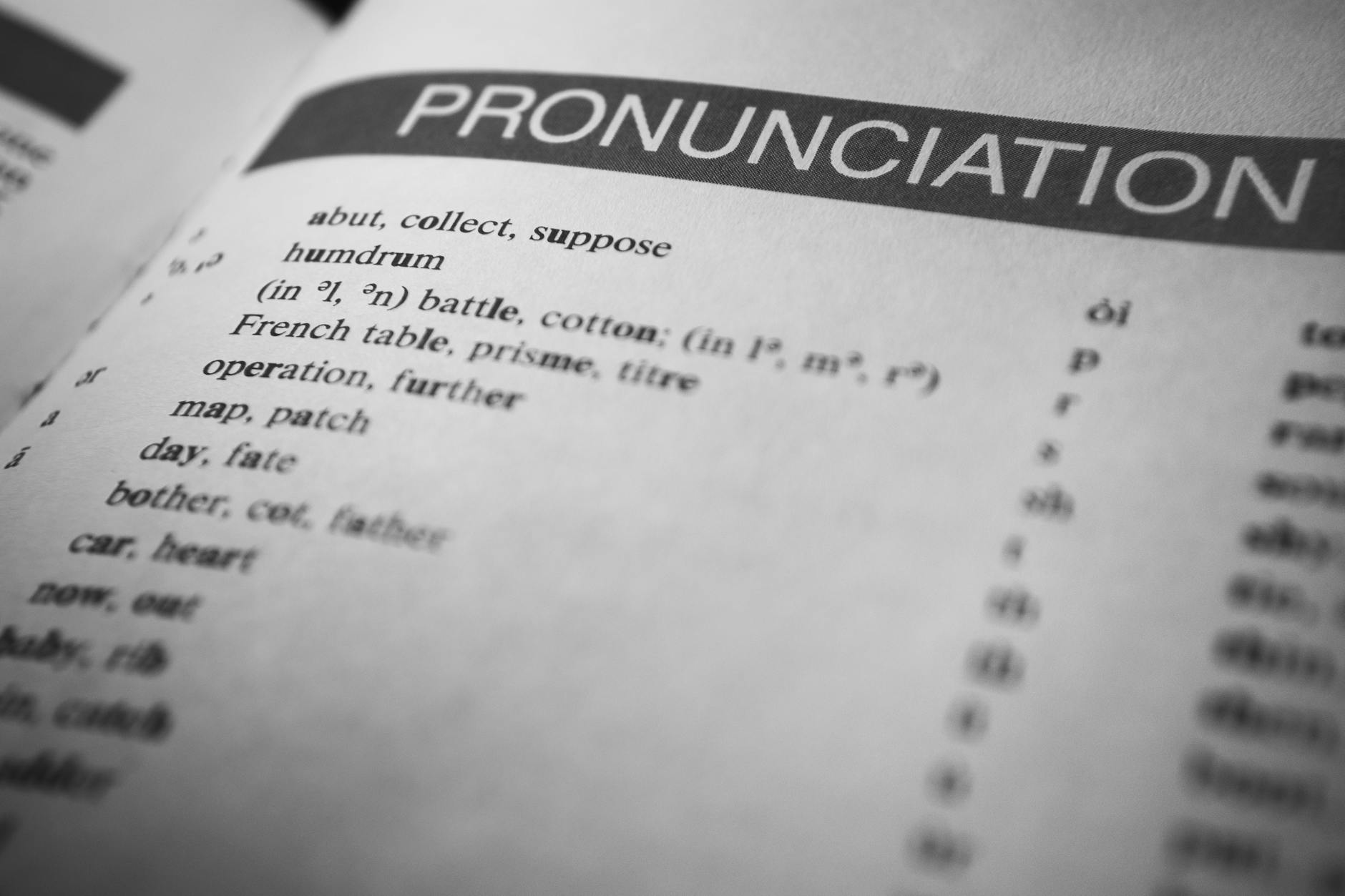Learning Japanese can feel exciting but overwhelming, especially when it comes to pronunciation. Pronouncing words correctly isn’t just about sounding good—it’s the key to being understood and connecting with native speakers. Getting it right helps you avoid awkward misunderstandings, makes conversations smoother, and shows respect for the language. In this guide, you’ll discover simple tips to refine your pronunciation and sound more natural. Let’s make speaking Japanese feel more approachable and rewarding
Understanding the Japanese Sound System
Mastering Japanese pronunciation starts with understanding its sound system. Unlike English, Japanese pronunciation is consistent and based on a straightforward set of rules. This means once you grasp the basics, pronouncing words becomes much easier. Let’s explore the essential components that make up the Japanese sound system.
The Five Vowel Sounds in Japanese
Japanese has only five vowel sounds, making it simpler than the 20+ vowel sounds in English. These vowels remain consistent no matter where they appear in a word:
- A (あ): Pronounced like “ah” in “father.”
- I (い): Sounds like “ee” in “meet.”
- U (う): Similar to the “oo” in “food,” but shorter and lighter.
- E (え): Close to “e” in “met.”
- O (お): Sounds like “oh” in “go,” but without extending the sound.
What makes Japanese vowels distinct is their clarity and brevity. They don’t glide into other sounds, as English vowels sometimes do. For example, English speakers might turn “o” into a diphthong like “ow,” but in Japanese, an “o” stays pure and simple.
Try saying “ka,” “ki,” “ku,” “ke,” “ko” out loud to feel how these vowels combine with consonants. Notice how each vowel is short and crisp—this precision is key to sounding natural in Japanese.

Consonants in Japanese
Japanese doesn’t use as many consonant sounds as English, and most are pronounced more softly. While many consonants are similar to their English counterparts, some differ:
- The Japanese ‘R’: This is one of the trickiest sounds for learners. It’s a blend of the English “r” and “l.” Touch the tip of your tongue lightly to the roof of your mouth, similar to saying a soft “d.” Practice “ra,” “ri,” “ru,” “re,” “ro” slowly and feel how the sound is delicate, not rolled or harsh.
- No strong ‘F’ sounds: The “f” in Japanese (e.g., in ふ as “fu”) is pronounced closer to a soft “h.” Say “hoo” and let your lips lightly release the air—it’s much gentler than the English “f.”
- No “Th” sounds: The English “th” sound doesn’t exist in Japanese, so words like “theory” would typically be adapted with similar syllables, like “se” or “za.”
One of the great things about Japanese consonants is their consistency. Unlike English, where the letter “c” can sound like either “k” or “s,” in Japanese, each consonant nearly always pairs with the same predictable vowel sounds.
Syllabic Nature of Japanese
Japanese is a syllabic language, meaning its sounds are structured around simple syllables (called mora). Each mora is generally made up of one consonant and one vowel (e.g., “ka,” “to,” “ne”). In fact, the Japanese kana script directly reflects this structure.
This strict syllable pattern shapes the rhythm of Japanese speech. English often combines multiple consonants (e.g., “strengths” has seven letters but only one vowel), but in Japanese, every syllable is evenly spaced. For example, the word “sakura” (さくら) has exactly three mora—sa-ku-ra. No syllable is stressed more heavily than the others, so each part of the word flows smoothly.
Because Japanese avoids clustered consonants, foreign loanwords often get modified for clarity. Take “McDonald’s”—in Japanese, it becomes “Makudonarudo” (マクドナルド). It’s stretched out to fit the syllable-based structure.
Pitch Accent in Japanese
English uses stress accent to highlight syllables, but Japanese uses pitch accent instead. This means tone, not volume, distinguishes one word from another. For example:
- Hashi (橋): Pronounced with a high pitch on the first syllable, it means “bridge.”
- Hashi (箸): Pronounced with a high pitch on the second syllable, it means “chopsticks.”
At first, pitch accent might feel unfamiliar, but it makes a huge difference in conveying meaning. Misplacing the pitch could lead to confusion. While it’s not as complex as tonal languages like Mandarin, pitch accent still plays an important role in sounding natural in Japanese.
The good news? You don’t need to perfect pitch accent right away to be understood. As you listen to native speakers and mimic their intonation, mastery will come naturally over time. Think of it like music—tuning into the rhythm and melody takes practice, but it’s rewarding!
Key Pronunciation Rules to Remember
Japanese pronunciation has some rules that might feel different at first, especially for English speakers. By understanding and practicing these key points, you’ll avoid common mistakes and sound much more natural. Let’s dive into some critical pronunciation tips that can instantly improve how you speak Japanese.
Avoiding Extra Vowels
One of the most frequent mistakes for beginners is unintentionally adding extra vowel sounds to consonants. Japanese words follow a specific syllabic pattern, so every consonant (except “n”) pairs with a vowel. However, this can lead English speakers to overpronounce.
For example, take the word “desu” (です), which means “is” or “to be.” While it’s written with a final “u,” it’s normally pronounced as “des”, without clearly saying the “u.” Overpronouncing it as “deh-soo” makes the word sound unnatural to native speakers.
This rule also applies to other words like:
- “Masu” (ます): Say “mas,” not “ma-soo.”
- “Deshita” (でした): Say “desh-tah,” without stretching the vowels.
Why does this happen? In Japanese, certain vowels like “u” and “i” become almost inaudible in certain contexts to make speech more smooth and efficient. Remember to listen closely to native speakers and mimic their speech to break this habit.
The Silent ‘U’ and ‘I’ Sounds
Sometimes, the sounds “u” (う) and “i” (い) are barely audible or completely muted, especially in fast or casual speech. This happens in specific situations depending on the surrounding consonants.
Here are a few cases to watch for:
- After voiceless consonants (k, s, t, h):
- “Suki” (好き): Instead of “soo-kee,” it often sounds more like “ski.”
- “Asita” (明日): It’s not “ah-shee-tah,” but more like “ash-tah.”
- In Polite Verb Endings:
- “Tabemasu” (食べます): This polite verb ending often sounds like “tabe-mas.”
- “Kikimasu” (聞きます): It’s not “kiki-mah-soo,” but more like “kik-mas.”
These muted sounds help keep Japanese speech short and rhythmic. If you over-pronounce them, it can make your speech choppy or overly formal.
Pronouncing Long Vowels
Long vowels in Japanese are a game-changer when it comes to meaning. Simply put, a long vowel is not the same as a short vowel. Extending the vowel sound changes the word entirely, so getting this distinction right is essential.
For example:
- “Obasan” (おばさん): This means “aunt.”
- “Obaasan” (おばあさん): With a longer “a,” this means “grandmother.”
Another example:
- “Oji” (おじ): Means “uncle.”
- “Ooji” (おおじ): Means “prince.”
To lengthen a vowel, you either repeat the vowel or use a specific marker based on the script:
- In Hiragana, a second vowel is added. For example, “okaasan” (おかあさん) for mother.
- In Katakana, a horizontal bar (ー) is used. For example, “suupaa” (スーパー) for “supermarket.”
The key is to hold the vowel for an extra beat—think of it like holding a musical note slightly longer.
Double Consonants and Their Effects
Double consonants in Japanese are marked with a small “tsu” (っ) and have their own rules. This little character adds a pause or “glottal stop,” creating emphasis or tension in the sound. Missing this subtle pause can make your speech sound unnatural—or even change the meaning entirely.
Here’s how it works:
- The Small Pause:
- “Sakka” (作家): A short pause between “sa” and “ka” helps you correctly say “author.”
- “Saka” (坂): Without the pause, this means “hill.”
- How It Feels: Imagine saying “hot topic” in English. There’s a natural pause between “hot” and “topic.” Now apply that idea to Japanese words with double consonants.
Paying attention to double consonants is vital because they show up often in everyday words, such as:
- “Nippon” (にっぽん): Japan
- “Kitte” (きって): Stamp
To practice, break words into syllables and focus on holding that brief pause. It’s like a breath in the middle of a word—subtle yet important.
The Role of Nasal Sounds
The nasal “n” sound, written as ん, is unique to Japanese. It’s important to pronounce it correctly because its sound changes slightly depending on its position in a word. Mispronouncing it, or ignoring it entirely, could alter the meaning.
Here’s what you need to know:
- At the End of Words:
- “San” (さん): Think of the “n” being slightly nasal, almost like humming with your mouth closed.
- Before Certain Consonants:
- Before “m,” “p,” or “b,” it sounds like “m.”
- Example: “Senpai” (先輩): It sounds closer to “sempai.”
- Before “k” or “g,” it can sound like “ng.”
- Example: “Ginkgo” (ぎんこう): Pronounced almost like “ging-ko.”
This nasal sound often blends into the following consonant, helping words flow naturally. Don’t force it—just let your mouth adjust as the sound shifts.
Getting comfortable with “ん” might take practice, but it’s worth it. It appears in many common words, like “konbanwa” (こんばんは) and “ganbatte” (頑張って).
Mastering these pronunciation rules takes time and patience—but each small improvement will make a big difference. By paying attention to how these elements come together, you’ll find yourself speaking more naturally and confidently.
Common Pronunciation Mistakes and How to Fix Them
Even for the most dedicated learners, Japanese pronunciation can be tricky. Many challenges arise because there are sounds, intonations, and rhythms in Japanese that don’t exist in other languages. But don’t worry—every mistake is an opportunity to improve. In this section, you’ll uncover some common pronunciation hurdles and simple ways to overcome them, helping you sound more natural and confident.
Confusing ‘R’ and ‘L’
One of the first stumbling blocks for English speakers is the Japanese “r” sound. It’s softer and falls somewhere between the English “r” and “l,” which can make it tricky. The tip of your tongue lightly touches the roof of your mouth, almost like the start of saying “d,” but much quicker.
Tips to Nail the Japanese ‘R’ Sound:
- Practice with the syllables: Say “ra,” “ri,” “ru,” “re,” “ro” repeatedly, paying close attention to how your tongue moves.
- Slow it down: Break it into steps. Start with a soft “d” motion, then ease into “r.”
- Record yourself: Play it back to check if the sound is subtle—neither a hard “r” nor a clear “l.”
Consistency is key. Spend a few minutes daily practicing, and your muscle memory will adapt.

Photo by Nothing Ahead
Misplacing Pitch Accent
Unlike English, where syllables are stressed, Japanese uses pitch accent to differentiate words. Saying the wrong pitch is like swapping words entirely. For example:
- Hashi (橋) (high-low) = bridge.
- Hashi (箸) (low-high) = chopsticks.
Misplacing accents can lead to funny—or embarrassing—misunderstandings.
How to Practice Pitch Accent:
- Listen first: Grab audio clips of native speakers or watch Japanese TV shows. Focus on which syllables rise or drop.
- Repeat out loud: Pause recordings after each word, then mimic the exact tone and rhythm.
- Start small: Focus on common words and phrases you use often. As you grow comfortable, expand your vocabulary.
It’s normal to stumble here at first, but being mindful makes a noticeable difference.
Overemphasizing Loanword Pronunciation
Japan loves adapting foreign words. For instance, “coffee” becomes コーヒー (kohi) or “camera” turns into カメラ (kamera). The problem? Many learners try to pronounce these words as they would in their original language, which can sound unnatural.
What to Remember:
- Fit the Japanese rhythm: Loanwords follow Japanese syllable patterns, so they’re simplified. For example, “hotdog” becomes ホットドッグ (hotto doggu).
- Don’t stress individual syllables: Japanese syllables are evenly-paced. Overemphasizing them creates awkward results.
- Practice common katakana words: From コンビニ (konbini) for convenience store to パン (pan) for bread, learning loanwords that come up daily helps you integrate naturally.
Embrace the Japanese style, even if it feels “off” at first—it’s how native speakers understand these words.

Mixing Up Similar Sounds
Some Japanese sounds are so alike that they blur together for new learners. For example:
- Shi (し) vs. Chi (ち)
- Zu (ず) vs. Tsu (つ)
They might seem minor, but mixing them up can lead to different meanings.
Strategies to Avoid Confusion:
- Break them into pairs: Practice “shi/chi” or “zu/tsu” side by side until the difference feels automatic.
- Focus on mouth shape: For “shi,” your tongue doesn’t press as hard, while “chi” uses more force.
- Use minimal pairs: Write sentences that swap out one sound and practice them (e.g., “Shisu ga suki” vs. “Tsu ga suki”). This reinforces meaning with pronunciation.
Patience pays off here. Once these subtle differences click, your fluency level gets a big boost.
Speech Rhythm Issues
Japanese speech flows at an even, rhythmic pace. Unlike English, it avoids stressing syllables or rushing through clusters of sounds. If your Japanese sounds “choppy” or rushed, it might be because you’re not following the rhythm of the language.
How to Smooth Out Your Rhythm:
- Tap it out: Think of each syllable (or mora) like a beat in music. Words like “arigatou” (ありがとう) follow a clear four-beat pattern: “a-ri-ga-to-u.”
- Practice with kana: Reading hiragana or katakana can help you visualize syllables and stay consistent.
- Shadow native speakers: Play clips of spoken Japanese, pause after a sentence, and repeat the rhythm, not just the words.
Imagine Japanese like a calm stream—it flows predictably and smoothly. The more you “go with the flow,” the more natural you’ll sound.
Mastering these challenges takes time, but each bit of progress will bring you closer to sounding like a native. Keep practicing consistently, and don’t be afraid to make mistakes—they’re part of learning!
Practical Tips for Improving Japanese Pronunciation
Improving your Japanese pronunciation is about more than just mastering sounds—it’s about truly communicating. To sound natural, you need to approach learning in practical ways that align with how native speakers talk. The good news? There are plenty of techniques and resources to help you refine your skills. Let’s explore some effective strategies you can begin using today.
Using Listening and Shadowing Exercises
One of the best ways to improve pronunciation is mimicking native speakers. This is where listening and shadowing come into play. Shadowing involves listening to a native speaker and immediately repeating what they say, matching their tone, pitch, and rhythm.
How to Incorporate Shadowing:
- Start with Slow Audio: Use beginner-friendly resources like podcasts or slow-paced listening materials. Beginner Japanese audio lessons are often designed with clear articulation, making them perfect for practice.
- Repeat After Native Speakers: Pick short phrases or sentences, pause the audio, and try to match exactly how it was said.
- Focus on Pitch Patterns: Pay attention to the pitch accent (is the tone rising or falling?) and work to replicate their natural flow.
By shadowing consistently, you’ll sharpen your ear and internalize the rhythm of Japanese speech without overthinking.

Photo by Feng Zou
Practicing with Native Speakers
Nothing builds confidence like speaking directly with native speakers. Interactive conversations expose you to real-time pronunciation corrections and give you a chance to apply what you’ve learned.
How to Connect with Native Speakers:
- Find Language Exchange Partners: Platforms like HelloTalk, Tandem, or Meetup connect you with Japanese speakers interested in learning your language.
- Join Conversation Groups: Many communities (both online and local) host Japanese language meetups where you can practice in a group setting.
- Hire a Tutor: Apps like Italki or Preply let you book sessions with native-speaking tutors who can provide detailed pronunciation feedback.
Don’t fear making mistakes—language is meant to be spoken, and often, the errors are where the best learning happens!
Leveraging Pronunciation Apps and Tools
Technology offers countless ways to refine your pronunciation. Many apps and platforms specialize in helping you master the nuances of speaking Japanese correctly.
Recommended Tools for Better Pronunciation:
- For Speech Analysis: Apps like Forvo and Speechling allow you to hear native pronunciations and get personalized feedback when you record yourself.
- Interactive Flashcards: Apps like Anki often include audio clips voiced by native speakers to help you pair words with correct pronunciation.
- Speech-Specific Practice: Try Pimsleur Japanese or Rosetta Stone for lessons that emphasize conversation and pronunciation.
These tools work like personal pronunciation coaches, making consistent practice simple, even if you’re short on time.
Recording and Analyzing Your Speech
Have you ever thought you pronounced something correctly but realized later it sounded off? Recording yourself can fix that. It gives you a chance to identify mistakes you wouldn’t notice in real time.
How to Make It Part of Your Routine:
- Record On Your Phone: Start small—record yourself reading a short Japanese sentence or repeating a new word.
- Listen and Compare: Play back your recording alongside audio from a native speaker. What’s different? Is your pitch or speed incorrect?
- Focus on One Issue at a Time: For instance, if you notice inconsistencies with the “r” sound, work on perfecting that before moving on.
This habit builds self-awareness and helps push you toward clearer, more natural speech.
Studying with Japanese Media
Consuming Japanese media is one of the most enjoyable ways to improve pronunciation while immersing yourself in the culture. Listening to authentic Japanese content tunes your ear to how native speakers actually talk.
Types of Media to Explore:
- Podcasts: Seek out podcasts designed for learners, like “Learn Japanese Pod” or “Nihongo Con Teppei.”
- Anime and TV Shows: While dramatic (and sometimes exaggerated), anime and dramas can help you learn casual conversational style and expressions.
- Japanese YouTube Channels: Follow creators who speak naturally, such as vloggers or language tutors, for practical learning.
- Music and Karaoke: Singing Japanese songs helps you practice pronunciation at a natural rhythm.
The key is to focus on materials that align with your learning level. Start with slow, articulated speech and gradually work up to faster-paced conversations.
Each of these methods brings you closer to mastering Japanese pronunciation. Whether you’re mimicking native speakers, connecting with language partners, or recording yourself, remember: improvement comes from consistent effort. Make pronunciation practice a daily habit, and you’ll see real progress!
Conclusion
Mastering Japanese pronunciation is absolutely doable with practice and patience. Small adjustments, like refining pitch accent or smoothing out syllables, have a huge impact on sounding natural. By paying attention to the details and practicing consistently, you’ll build the skills to speak clearly and confidently.
Pronunciation isn’t just about technical accuracy—it’s a bridge to deeper connections with native speakers. The more effort you put in, the more rewarding your conversations will become.
Keep practicing, stay curious, and remember that every word you master brings you closer to fluency. Start small, stay consistent, and enjoy the journey!








